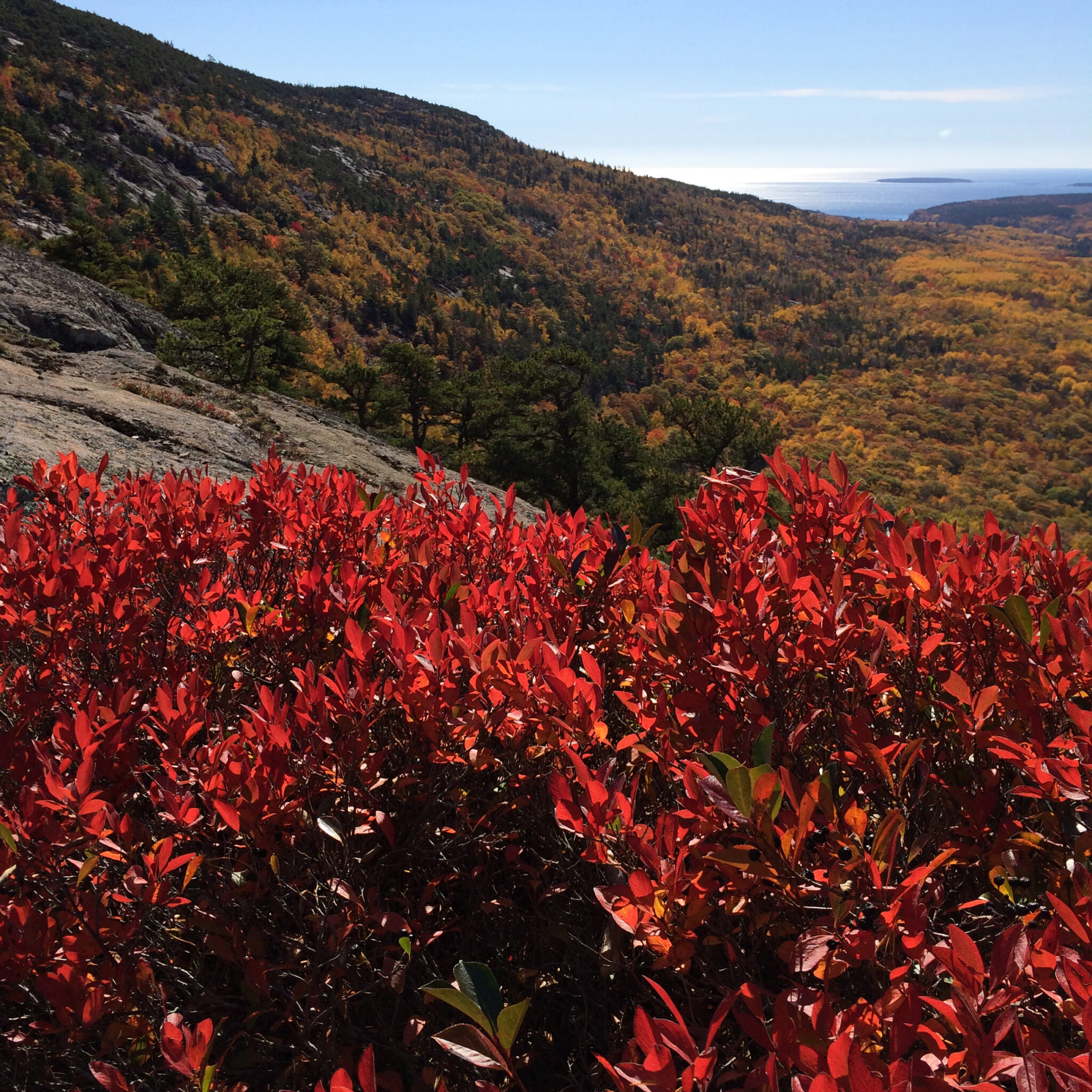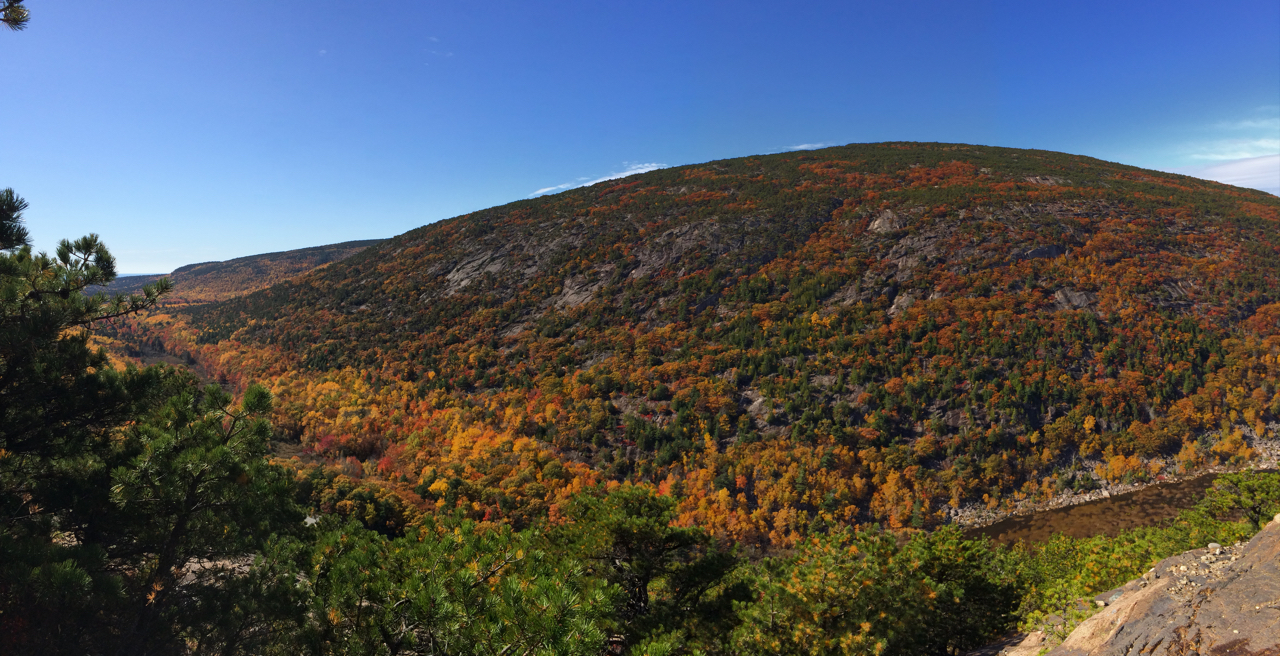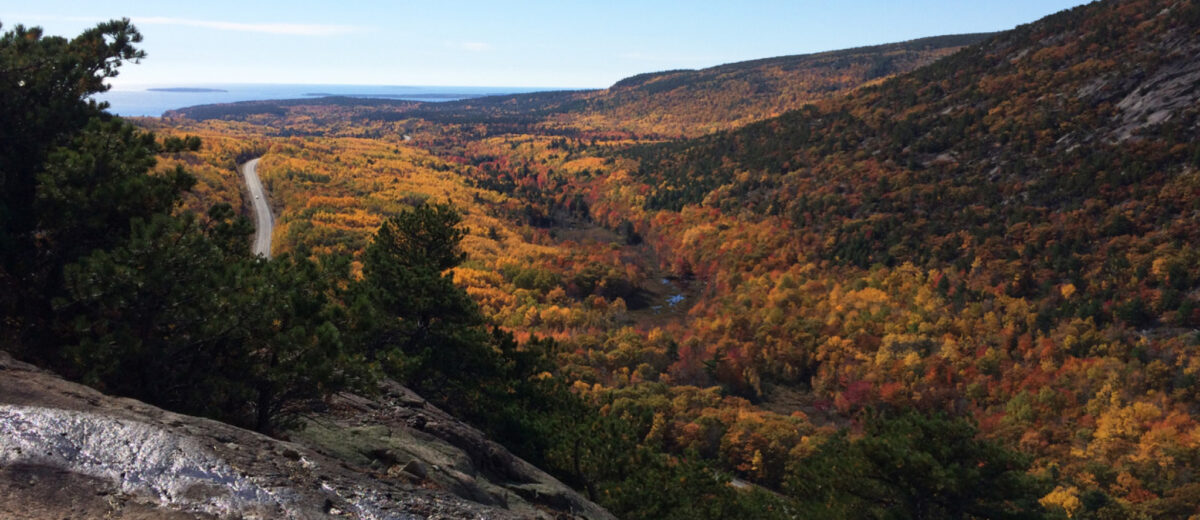But climate change is also shifting the timing of that dazzling fall color so many people traveling to Acadia are hoping to experience, according to a study led by Second Century Stewardship Fellow Stephanie Spera of University of Richmond and published recently in the journal Landscape Ecology. Using National Park Service records, newspaper archives, and historical photographs contributed by hundreds of Acadia visitors, combined with more recent satellite data, Spera was able to determine that, on average, peak fall foliage is now occurring almost two weeks later than it did in 1950.
 The historical records were crucial to this conclusion.
The historical records were crucial to this conclusion.
“If we only looked at the satellite data since 2000, we would not have found any trend,” said Spera. “It was because of the archival, citizen science that we were able to extend the data set and detect the longer-term trend.”
Spera connected with people like Bill Skocpol, who has a cabin on Little Echo Lake, and took photographs every October for 30 years. “A linear trend is not conclusive from one set of pictures,” said Skocpol, “but by aggregating many such observations, this study shows a definite trend toward later peaks of color. I am pleased to have helped advise leaf-peepers when best to schedule their trips.”
Another challenge Spera and her colleagues faced was identifying peak fall foliage, which does not have a universal definition. The archival record is not a perfect representation of the past. Leaves change color over days and weeks, and defining “peak” is subjective and inexact. “We included all records that used the word peak, and used the average when there was a range of dates,” said Spera.
Analysis of climate data showed that minimum temperatures, maximum temperatures, precipitation, and the number of warm nights, hot nights, warm days, hot days, and downpour days all have increased significantly since 1950 across Mount Desert Island.
Warmer temperatures in particular were consistently correlated with delayed timing of peak fall foliage. Air temperature, along with decreasing daylight, provide the primary cues for trees to begin shutting down chlorophyll production, which makes other pigments in leaves visible. “September temperatures seem to be the most important variable in predicting the timing of peak fall foliage, with warmer Septembers resulting in later peak fall foliage,” said Spera.
While in general peak foliage is occurring later, shifting to around the third week in October, predicting when peak color will occur in any given year is difficult because weather patterns are more erratic, especially precipitation. Later peak color also was associated with more rain in May. “This was surprising, but not completely unfounded,” said Spera. “Multiple studies have demonstrated that what happens in one season influences the next.” The links between climate and color also vary by species – some trees are more tolerant of drought than others, said Spera.
What does this mean for the park?
“As the climate changes, the demand for visitor services increasingly expands into the spring and fall,” said Superintendent Kevin Schneider. “Not only are we seeing visitation numbers increase, we are also watching the peak visitation season get longer.”
Fall means beautiful colors, but also crowds. October 9, Indigenous Peoples Day, is the last day of the Island Explorer shuttle service. The National Park Service advises visitors to plan ahead and have a backup plan in case parking is unavailable. Fall also brings shorter days and cooler temperatures. Visitors should have a reliable light source, plenty of layers, and water to ensure a safe and comfortable experience enjoying autumn in Acadia.
Second Century Stewardship is a partnership of the National Park Service, National Park Foundation, David Evans Shaw Family Foundation, and Schoodic Institute at Acadia National Park.

